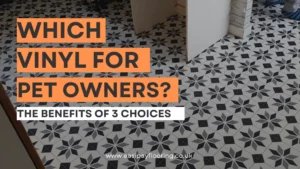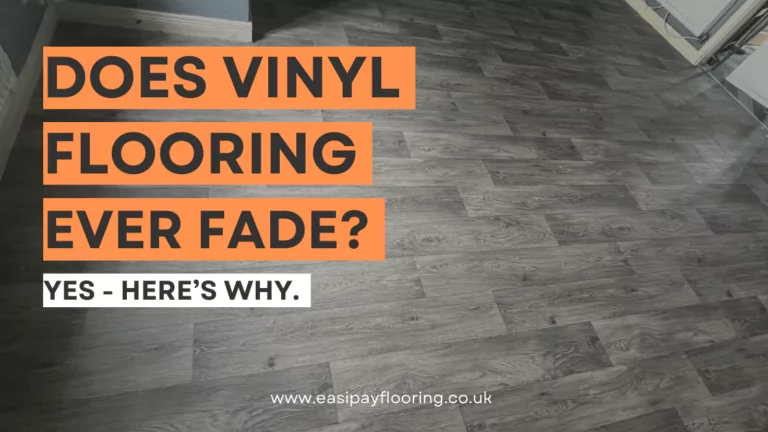
Please Note: We’re currently out of stock of LVT, while we switch supplier, we’ve reduced the cost of SPC flooring to the price of our LVT.

Get In Touch:
03303 332360


Vinyl flooring is a popular choice for many homeowners due to its durability, ease of maintenance, and versatility in design. However, like all materials, it is not entirely immune to the effects of time and environment. One common issue with vinyl flooring is fading, which can diminish its aesthetic appeal. This article delves into why vinyl flooring fades over time and the factors that exacerbate this process.
The primary culprit behind the fading of vinyl flooring is exposure to ultraviolet (UV) rays. Just as sunlight can cause fabrics and other materials to fade, it can also degrade the colours in vinyl flooring. Rooms with large windows or glass doors that allow significant sunlight exposure are most likely to see this type of wear.
The inherent quality of the vinyl also plays a crucial role in how quickly and significantly it fades. Lower-quality vinyl flooring often lacks the comprehensive UV protective coatings that higher-quality options possess, making it more susceptible to sun damage.
Regular exposure to harsh cleaning chemicals can also contribute to the fading of vinyl flooring. Certain substances in cleaners may react with the vinyl and cause discoloration or fading, especially if used excessively or if the cleaners are not suitable for vinyl flooring.
Read More: When Should You Replace Vinyl Flooring?
As mentioned, direct sunlight is a significant factor. Vinyl flooring in sunrooms, living rooms, and other areas that receive hours of direct sunlight will fade much faster than flooring in more shaded areas.
In some cases, vinyl flooring may not have adequate UV stabilization or protective coatings, which helps to block or absorb UV rays. Flooring without this protection will inevitably fade faster when exposed to sunlight.
Areas of vinyl flooring that receive high foot traffic can fade quicker, not just due to physical wear but also because the constant use and cleaning wear down the protective layers over time.
Read More: Why Does Vinyl Flooring warp?
While fading over time can be a natural process, there are several ways to reduce the rate at which it happens:
Fading is a common issue for vinyl flooring but understanding its causes and the factors that accelerate it can help in choosing the right flooring and in taking the necessary steps to prolong its life and beauty. By managing sunlight exposure, selecting quality materials, and using appropriate cleaning methods, you can significantly reduce the fading of your vinyl floors.
On the hunt for new flooring? At Easipay Flooring we offer Carpets, Laminate, Vinyl, SPC and LVT flooring at affordable prices and we even let you break down the cost into weekly, fortnightly or monthly payment plans too, completely interest free! Sound good? Tap the button below to get set up a home visit to see our samples and get your free quote!
The onset of fading depends on the factors mentioned, such as sunlight exposure and material quality. It can start within a few months in highly exposed areas or take several years in more protected settings.
Fading itself does not weaken vinyl flooring, but it can indicate that the surface has been exposed to conditions that might also lead to wear and tear.
Once vinyl flooring has faded, it cannot usually be restored to its original color. Preventive measures are the best strategy.
Normal indoor lighting is unlikely to cause significant fading, but direct exposure to UV light from certain types of indoor lighting can contribute to fading over time.
Darker colours may show fading more noticeably than lighter colours, but all colours can fade if exposed to the factors that cause fading.
While sealing can offer a protective layer, not all vinyl flooring types are suitable for sealing. Check with the manufacturer’s recommendations before applying any sealant.
Replace or rotate rugs and mats when they show signs of wear, or every few years, to ensure they continue to protect the flooring effectively.
UV-blocking window films or solar shades are very effective at reducing the amount of UV light without significantly affecting natural light.
Yes, many manufacturers now offer eco-friendly vinyl options that include UV resistance. Look for certifications or product specifications that mention environmental considerations and durability.
Professional installation ensures proper placement and treatment, which can help extend the life of the flooring, but it does not directly impact the rate of fading due to UV exposure.
Contact Us!